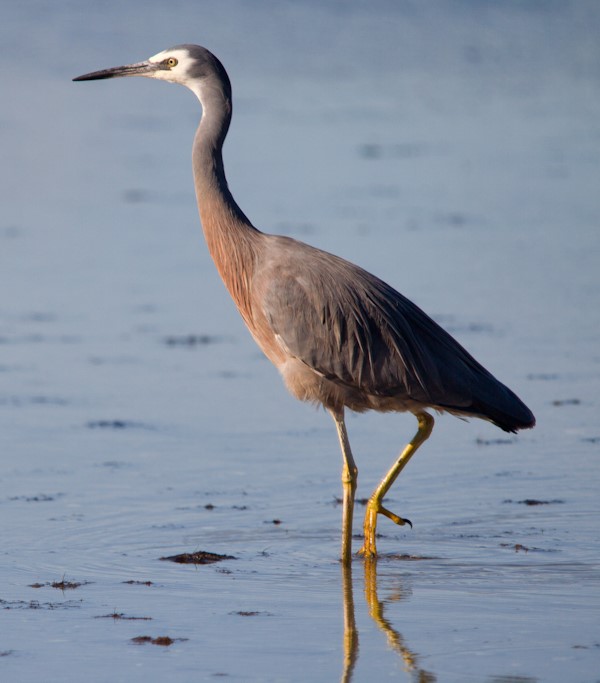White-faced Heron
The white-faced heron (Egretta novaehollandiae) is one of the icons of Pāuatahanui Inlet. Its statuesque beauty, with an elegant, even haughty, posture and delicate walk as it searches for its food, makes it so. It is because of this that we have adopted it as the featured animal on our brochure.
However, it is but an Australian immigrant. Widespread from Indonesia to the subantarctic islands, via New Guinea, New Caledonia and Australia, it was first seen in New Zealand as an occasional visitor in the early 20th century. By the 1940s it had become established in Otago and on the West Coast and is now common throughout the country, especially in coastal areas.
Herons are usually thought of as associated with marine wetlands and estuaries, but they also occur around rivers, freshwater lakes and ponds, and even on pasture land. In Australia they are present everywhere except for the very driest parts of Western Australia. It has been suggested that their explosive spread through inland New Zealand in the 1950s and 60s was aided by the rapid conversion of forest to farmland. The many farm dams established at this time were quickly colonised by the Australian Green Frog, a favourite food of the herons in Australia.
It seems herons don’t like the bush, though they do need tall trees for nesting. The macrocarpa and pine trees around the Inlet are particular favourites.
Unless present in very large numbers they tend to be solitary birds and don’t breed in colonies.

Their ability to live in such varied habitats is founded on their very wide diet of small animals, which includes, for example, crabs, fish and frogs, land insects such as grasshoppers and large flies, and aquatic insects such as dragonflies. Around Pāuatahanui Inlet white-faced herons are most commonly seen fishing for crabs and small fish, which they disturb with their feet as they walk in the shallows.
White-faced heron breed in spring and early summer, and when in breeding condition they exhibit long, often curved, feathers (the nuptial plumes) on the neck, head and back. They also practise sexual equality: male and female contribute equally to nest building, egg incubation and care of the young. Their mating system is unknown, but what is known is that the young, who fledge 6-7 weeks after hatching, often stay with their parents until the next breeding season. This may imply that herons mate for life, or at least for more than one season.